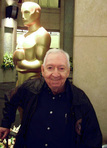Jack Fitzgerald's Blog, page 2
February 16, 2017
The Writing Hat Trick
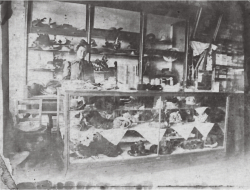 Many, many people with whom I‘ve been in contact during my adult life have expressed the desire to write a book. Many of them have been told after several drinks during a highly charged round of chit chat, “You should write a book.” The person receiving such words really feels pumped up until they actually try to start putting words down on a blank page or screen. They perhaps will get a couple of pages written, stop and never pick up on their thoughts again. Then on the other hand they might actually get going but soon run into something called “writer’s block”. This stuns their creativity in its tracks and their objective turns into a “work in progress”—an expression meaning “not going to happen”. All of their good intentions somehow fail to materialize. Their noble venture withers and dies on the vine.
Many, many people with whom I‘ve been in contact during my adult life have expressed the desire to write a book. Many of them have been told after several drinks during a highly charged round of chit chat, “You should write a book.” The person receiving such words really feels pumped up until they actually try to start putting words down on a blank page or screen. They perhaps will get a couple of pages written, stop and never pick up on their thoughts again. Then on the other hand they might actually get going but soon run into something called “writer’s block”. This stuns their creativity in its tracks and their objective turns into a “work in progress”—an expression meaning “not going to happen”. All of their good intentions somehow fail to materialize. Their noble venture withers and dies on the vine.
A lot of people intend to write screenplays but the form and intricacies of the medium stymie them as much or more than writer’s block. I once had a woman send me her screenplay for script doctoring. She had no earthly idea how to write a screenplay. She had no coherence whatsoever because her story idea weighed a ton. She came to me, she said, because she had “writer’s block”. I did eventually work on her screenplay but doctoring on my part meant cutting out the fat on her idea by nearly 85%.
What’s wrong in all these cases? It’s not writer’s block. It’s the old hat trick. My father used to say, “Life is a hat trick. You reach in and pull out an idea and run with it.” He added, “The thinner the idea, the lighter the load.” He meant, of course, that the more specific you are in your plan, the lighter the load.
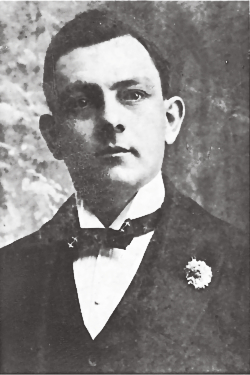
S. P. Howard
Take the case of my grandparents Lilly Rousseau and S. P. Howard. They led fantastic lives, which could serve as fodder for many books. If you tried to cram it all into one book, you would surely get “writer’s block”. Why? The idea load is too heavy and thus you will soon tire of it.
So, let’s do the old hat trick. Just reach into the writing hat and pull out one incident—that we will call the basic story line—treat it like a singular NOUN (for example, the noun marriage). Then add plot and treat it like a VERB—action via complications. Run with the two and I guarantee you won’t have writer’s block. It will be smooth sailing along your writing route.
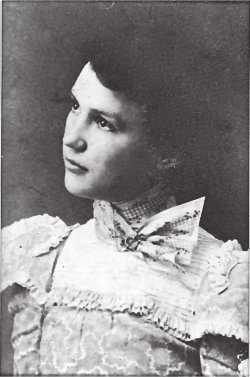
Lilly Rousseau
Okay, here’s a specific example from my own writing hat. Instead of reaching into the hat and pulling out the idea of “Recount the lives of Lilly and S. P.”, which weighs a ton, I reach in and pull out the much lighter idea of “How Lilly and S. P. met and married three days later.” With this lean of an idea for a book or a screenplay, I guarantee you won’t run into writer’s block.
Here’s why: You need to be able to tell your basic plot and story line in very few words. Two common methods for doing this are available: (1) A LOGLINE which is about 25 words or (2) A BRIEF SYNOPSIS which is 75 or so words. If you can do either or both of these easily with your project, you are definitely on the right track to doing away with writer’s block.
F or example :
LOGLINE: Young man in 1901 at his bachelor party accidentally meets his soul mate and surprises everyone by marrying her 3 days later.
BRIEF SYNOPSIS: S. P. who lives in San Antonio is going to get married to his business partner’s sister in 1901. His friends take him to Saint Louis for a bachelor’s farewell party. His fiancée tells him to buy her a wedding hat while there. The last day he goes to a fashionable French hat shop and who waits on him but a fabulously beautiful, young French lady by the name of Lilly Rousseau. Three days later they are married.
True story. Here I am, their grandson, writing their hat story for you. It’s the strangeness of life that intrigues us. We can only ferret out these surprises of life if we are specific in our original idea and try not to carry too heavy a load.
So, it’s the old hat trick, both literally and figuratively. Overcome writer’s block before you begin and you do that by making the NOUN and VERB of your project skinny.
Good writing.
February 9, 2017
Roger Should Have Said Yes!
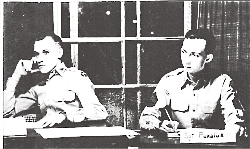 After the Roger debacle, I realized that the writing industry in Hollywood was rife with successful kooks. This meant that the word “yes” had to be approached from a totally different angle. I quickly found myself on the lookout for anyone who had a track record of saying “yes”. I soon realized that the majority of Hollywood “yes” people comprised the lower echelon in the business. The well-heeled dealt in “no” and were Rogers through and through. Struggling agents, actors, producers, writers and directors were all “yes” people.
After the Roger debacle, I realized that the writing industry in Hollywood was rife with successful kooks. This meant that the word “yes” had to be approached from a totally different angle. I quickly found myself on the lookout for anyone who had a track record of saying “yes”. I soon realized that the majority of Hollywood “yes” people comprised the lower echelon in the business. The well-heeled dealt in “no” and were Rogers through and through. Struggling agents, actors, producers, writers and directors were all “yes” people.
Many big-time agents were as bad as Roger. Their specialty was saying “no”. They like so many people in the industry wanted only to deal with “slot machines” that paid off—the name game. At their level, dealing with talent and creativity meant never taking a chance.
Thankfully I managed to find an agent who didn’t belong to the school of “no”. He was not a top agent but he was an agent. His interest was in getting the best of the leftovers the other agents turned down. For me and my newly minted rhinoceros skin, I now became possessed with anyone who had yes in their lexicon. This “yes” agent of mine secured me work as a script doctor with some of the other “yes” people in town. This is how I spent my Hollywood years up to my retirement—working on other people’s projects. I did well in that area but my screenplays withered on the vine, so to speak.
I recently decided to take them out of obscurity, publish them and let you the reader decide if Roger Should Have Said Yes.
At the end of each screenplay, you will find an industry regulation form for readers to provide coverage of the scripts assigned to them. You can fill out this document and give Roger some competition. It could be a lot of fun as a book club activity, a project for you and your reading buddies and for all of you who are budding screenplay writers. You can now become an insider thanks to Roger Should Have Said Yes.
Screenplays included in this anthology that are up for your review include:
Piece of Cake—Young Oklahoma prostitute operating on South Beach in Miami has in one day all the bad luck possible to befall her. She vows to begin life all over and this time around make it more endurable.
Bad Trip—Small-town, religious couple from Oklahoma honeymoon in Hollywood, California, where everything that is supposed to be wonderful turns into a rotten reality show for them.
Pasadena—Dirt-poor, large Illinois family immigrates to wealthy Pasadena during the early 1900s in an attempt to secure a new life. The background is during the beginning of the Rose Parade and Tournament.
Cleo de Janeiro—A young man and his band of musicians end up in a situation where they employ a 95-year-old hotie as their lead singer A surreal version of Romeo and Juliet.
In the next blog, we will examine some overall information you need to know if you plan on trying to break into the writing game in Hollywood.
(If you’re reading this from Facebook then you should know I have a new website where you can read more about Roger. Click here to see the new website.)
February 2, 2017
Remembering Barbara Hale
This week’s blog is in remembrance of Barbara Hale who passed away last week. She was on the Perry Mason TV show for many, many years playing Della Street. Over those years she became almost like one of the family for countless TV viewers. I had the privilege of meeting her at a Film Noir Festival in Palm Springs, CA, a couple of years back. Barbara and I talked as though we had known one another for years. That was her special talent. She never met a stranger and her smile portrayed why. I was so impressed with her that I devoted a blog to her and her part in the festival. I thought it befitting to re-visit that blog in light of the sad news of her passing. She was 94 but I can guarantee you she still was very young in heart. I hope you enjoy reading this blog. It might just make you want to stoke up an episode of PERRY MASON and see what we’ve lost in the death of Barbara Hale. My very best to all you readers who are with us on the “second time around.” Thanks, Jack.
(Originally posted May 15, 2014)
This past week Palm Springs where I live hosted yet another one of its fabulous film festivals: The Arthur Lyons Film Noir Festival. This annual film lovers get together was founded fifteen years ago by the late Arthur Lyons, a lover of black and white films of the 1940s and early 1950s. The Film Noir Foundation has over the years chased down many of these largely-ignored films and returned them to newly restored 35mm prints.
Watching these great films of the past on the big screen is not only an appreciation multiplier but exactly how their creators had intended them to be seen. The festival itself is a unique assemblage of venerable stars, film biographers, fans dressed in era costumes and a general public all sharing their insights and recollections in a collaborative celebration of classic films.
The term Film Noir was coined by French critics to describe a type of film that is characterized by its dark, somber tone and a cynical, pessimistic mood. Literally meaning dark or black film, the term is derived from roman noir, a black or dark novel. Specifically, film noir describes those Hollywood films of the 40s and early 50s which portray the dark and gloomy side of life and many times focus on the underworld of crime and corruption. These films have heroes as well as villains who are cynical, disillusioned and often insecure losers. In terms of style and technique, the film noir basically abounds with night scenes, both interior and exterior, with sets that suggest dingy realism and with lighting that emphasizes deep shadows and accents a mood of fatalism.
Some of the film noir movies which showed this past week were The Window, Roadblock, Too Late for Tears, Sunset Boulevard, Sorry, Wrong Number, The Killers, Out of the Past and Laura.
Stars who attended were Barbara Hale (The Window), Nancy Olsen (Sunset Boulevard) and Terry Moore (Shack Out on 101.)
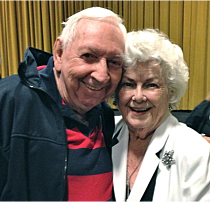
Barbara Hale and Jack after the showing of The Window.
I attended opening night with the showing of The Window starring Barbara Hale. This film was made in 1948 but was held up for release by its producer Howard Hughes for nearly two years. I had never heard of the film but like the rest of the audience found it excellent. It too benefitted from a restored print courtesy of The Film Noir Foundation. The Window also starred Arthur Kennedy, Bobby Driscoll, Ruth Roman and Paul Steward.
After the showing of the film, Barbara Hale was brought from the audience to the stage. She is a very pretty 93 year-old who is witty, charming and full of life. She discussed the film as well as her major career as Della Street of the Perry Mason series. She told the audience that she had not seen The Window in fifty-five years. She also said that she had no idea why Howard Hughes held up the release of the film. She noted that Mr. Hughes never interfered with films while they were being made. He apparently did that after they were completed by rarely releasing them promptly.
She spoke of Bobby Driscoll, the young actor who actually carried the film as he was on screen almost constantly. The credits said he appeared by special permission of Walt Disney. He had appeared in many Disney films including Song of the South. During the Q and A that followed, one audience member stood and said he had seen this film when he was a small boy and that he had developed a big crush on Bobby Driscoll. He wondered what had happened to him. She said it hurt her to relate that he had a very sad life, having been unable to find adequate work once he was an adult. He had overdosed on drugs in his early twenties and died. She added that for his role in The Window he had received a special Oscar for a juvenile performance.
Barbara spoke of Raymond Burr and her 9 years with that show. She said he was a practical joker and she never knew what trick he was going to play next. Several times she would come to work and find that her dressing room had been mysteriously painted a very strange color or that the floor had been covered with raw eggs which she stepped on in the dark. She also recounted that Earl Stanley Gardner who was the creator of the Perry Mason show could be difficult at times. Once she had to redo a scene because she leaned on Perry’s desk. He said he would never allow his secretary that liberty so the scene was done again.
Barbara was extremely gracious and seemed much younger than her 93 years. She spoke of her wonderful 36 years of marriage to actor Bill Williams and their son actor William Katt.
How amazing that one can go to an event like this Film Noir Film Festival and hook up with the past in such a splendid manner. I spoke with Barbara Hale afterwards and she couldn’t have been sweeter or nicer. What an evening. There was an opening night party to boot and all the good food and drink rounded out a perfect evening spent in the past.
January 26, 2017
Roger Shows His True Colors
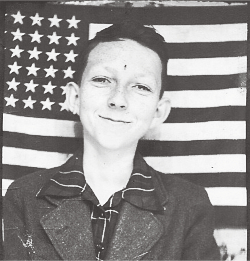 What did I do after Roger told me I was fabulous and he’d gladly read anything I wrote? I went home and began writing Bad Trip, which I dutifully took to the studio a couple of months later. When I next found Roger, he was in a nice office and had a secretary. He looked as successful as I looked unsuccessful. He again repeated his spiel to me.
What did I do after Roger told me I was fabulous and he’d gladly read anything I wrote? I went home and began writing Bad Trip, which I dutifully took to the studio a couple of months later. When I next found Roger, he was in a nice office and had a secretary. He looked as successful as I looked unsuccessful. He again repeated his spiel to me.
Yes, I went home and wrote yet another screenplay—Cleo de Janiero. I really thought he would go for this one. When I went out to the studio, much to my surprise I found Roger in a very spiffy office with a very personable assistant. In fact, I had to go through two gatekeepers to get to him and his fancy digs. Both Roger and his assistant couldn’t have been nicer to me.
Almost by rote, he began repeating his usual monologue to me of how fabulous a writer I was, etc. etc. I finally stopped him midway in his recitation and asked him how was it I got poorer each time I came out to see him and he got richer. He smiled at me as though I had not a scintilla of a brain and said proudly, “I always say no.”
I replied, “Excuse me?”
He replied as though he were talking to an orangutan and said, “I never accept anything. That way I never can be at fault for costing the studio money. They think I am doing a bang-up job.” I could have socked him but I took my manuscript and left.
A couple of years later I noticed in the trades that Roger was now one of the big wigs at the studio—vice president or something like that. So, is that how one gains success in Hollywood? Saying no?
Let’s do a little analysis in the next blog. Okay.
(If you’re reading this from Facebook then you should know I have a new website where you can read more about Roger. Click here to see the new website.)
January 19, 2017
Presenting Roger
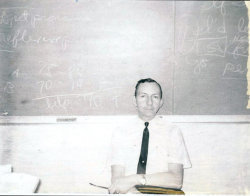 I licked my wounds and as quickly as I could tried to access where I was in life. It meant that I needed a job—any job. I ended up teaching English at a Korean school in Los Angeles while trying to see if I could gain some measure of employment as a writer. I did everything I could to try to get some interest in the spec script I had written, Piece of Cake. No matter how hard I tried, I could not collar any green-light person with enough clout to get it to first base.
I licked my wounds and as quickly as I could tried to access where I was in life. It meant that I needed a job—any job. I ended up teaching English at a Korean school in Los Angeles while trying to see if I could gain some measure of employment as a writer. I did everything I could to try to get some interest in the spec script I had written, Piece of Cake. No matter how hard I tried, I could not collar any green-light person with enough clout to get it to first base.
At a film conference in Beverly Hills on one occasion, I did manage to get in a few words to a top female mogul at one of the major studios. I quickly pitched her the gist of my screenplay. She listened politely and accepted my resume. Much to my surprise, a few days later I got a call from her office asking me to drop off a copy of my script. I have never accomplished any feat as fast as I did in getting her a copy of that scenario. I did not see her but left it with her secretary. About three weeks later, I got a call to go to the studio and talk with a young man in their story department whom I shall call Roger.
I got to the studio and was so full of apprehension that I almost broke out in shingles. I finally found Roger, who called his particular piece of heaven a small cubicle in a large room of many cubicles. He welcomed me with a big smile, had me sit and proceeded to tell me how much he liked my screenplay. My heart was beating so loudly I could hear it in my ears. Then just when I thought Roger was going to lift me out of that Korean school into a new life, he said with a great smile, “Jack, in spite of my loving Piece of Cake, I’m going to have to pass. But you’re a splendid writer. Be sure to drop off your next script for us to examine. Really, I’d love to read anything you write.”
Ah, the web the Rogers of this world spin. Read the next blog and uncover the true Roger.
(If you’re reading this from Facebook then you should know I have a new website where you can read more about Roger. Click here to see the new website.)
January 12, 2017
The Mexican Connection
In my last blog, I informed you that my screenplay project “Margarita” departed this life unexpectedly. I realize in re-reading the blog that I only provided you with few specifics concerning Margarita’s demise. I mentioned that a changeover in studio project management dealt the death-knell to the venture. That is only part of the story. For you to get the whole picture of this project and its unexpected demise, I need to tell you all about “The Mexican Connection.” I feel I owe you a fuller explanation of all things Margarita than I provided in my last blog.
My fortunes as a writer in Paris blossomed shortly after my sixth play TIUANA LADY opened. The plot at the time was shocking. It dealt with a transsexual, who goes home to her father’s funeral. No one in the little southern hometown in Arkansas realized that their hometown homo “he” had become a super sexy “she” porno star by the name of Clytee de Khunt. All sorts of social farce and satire were explored. The play was my take on small town fascism in the United States.
All of a sudden I became a rather hot ticket. The reviews, especially in the International Herald Tribune, were glowing, and I even got asked to speak at UNESCO on the new and totally not understood topic of sex changes. I must admit I was far from an expert on the topic but I did wing it the best I could at the conference in order not to make a total nincompoop of myself. It must have worked because the next thing I knew a British film company optioned TIJUANA LADY for a film.
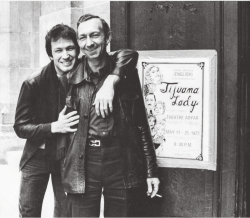
Wallace Potts & Jack Fitzgerald
The most unusual thing about The Paris English Theatre’s production of TIJUANA LADY was its opening. After I wrote the play, I realized that I was asking the audience to accept that this sex-change person could be a porno star. It came to me that if perhaps I began the evening with a short 6-minute “preview of coming attractions” film geared for porno theaters, it possibly might make the leading character more believable. It seems here in the United States, ordinary people only begin to take on their god-like mantels when the public sees them on film. Up until that point, they’re dust—but film somehow deifies them. So I decided to make the film.
That was the turning point in my career. That six-minute film idea actually kicked my career into high gear. What did I know about making a film at the time? Where would I get the equipment? So many questions. For help, I threw myself onto the good graces of Thomas Quinn Curtiss, the drama critic from the International Herald Tribune who had given me very good reviews on my earlier plays.
He put me in contact with Giuseppe Hibler, the last protégé of the great Italian Motion Picture Director, Luchino Visconti, of films like The Leopard, The Damned, Ludwig and Death in Venice. Giuseppe was an extremely personable and handsome young man. He was also a sparkplug in that he made things happen. Before I knew it, he had taken over this little six-minute ersatz porno preview and brought on board Wallace Potts, who not only was the partner of the famous ballet dancer Rudolf Nureyev but a professional porno producer. Wallace secured the help of his good friend and Oscar winning cinematographer, Nestor Almendros of the excellent films Days of Heaven and Kramer vs. Kramer.
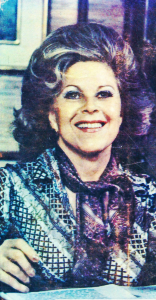
Irma Salinas Rocha
Suddenly everything seemed like overkill but I simply stepped back and let the pros do their thing. After about two weeks, the film was made and the play opened. Indeed it did establish “Clytee” as a star and as a result all sorts of good things began to happen.
Out of nowhere Giuseppe put me in contact with a Mexican lady by the name of Irma Salinas Rocha. She belonged to one of the richest and most powerful families in Mexico. (Steel, beer, glass, television and you name it.) That was on her husband’s side. On her side, her father had founded the largest department store chain in Mexico. Irma’s family wealth one could say was on the mega side.
She had heard of me through all the good things that were happening with TIJUANA LADY. After all, Tijuana is in Mexico. She was connected with Giuseppe’s family in Mexico. She asked him to put her in touch with me.
Long story short. Irma and her in-laws on her husband’s side got into a major conflict over the mysterious and accidental death of her husband, who was to have become the head of the family’s operations. She did a lot of investigation and wrote a tell-all book called NOSTRO GRUPO that was a mammoth hit in Mexico. She wrote a second book on its heels named TAL QUAL and it too did well. Her in-laws were furious. She decided to make them even more furious. She wanted the two books to be made into a film in Hollywood. The problem was she needed an American writer who knew Spanish, could read her books and put all of their drama into an English scenario. Before I went to live in Paris, I had been an instructor of Spanish at New  York State University in Plattsburg and earlier at Wake Forest University in North Carolina. I had a Masters Degree from The University of Madrid. So I seemed a perfect fit to her.
York State University in Plattsburg and earlier at Wake Forest University in North Carolina. I had a Masters Degree from The University of Madrid. So I seemed a perfect fit to her.
Irma hired me to go to Hollywood and turn her two books into a blockbuster. In the last blog, you read about my going to Los Angeles and working on this project. All systems were really on go. We had Martin Jurow aboard, who was producer of the films Breakfast At Tiffany’s, The Pink Panther, and The Great Race. We also had as producers Barry Brown and Fritz Holtz of Broadway hits such as Mame, Gypsy and La Cage aux Folles.
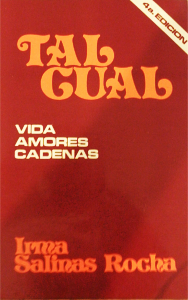 Things apparently couldn’t be better and the outlook brighter for my screenplay MARGARITA. My Parisian muse was having a ball. Then life threw in a monkey wrench. Irma and her in-laws made a truce contingent on the film’s getting junked. So, there in a matter of a day my muse went from Cloud 9 to the Hollywood Scrap Heap. This is how Roger entered my life. Meet him in the next blog. Really, ROGER SHOULD HAVE SAID YES!
Things apparently couldn’t be better and the outlook brighter for my screenplay MARGARITA. My Parisian muse was having a ball. Then life threw in a monkey wrench. Irma and her in-laws made a truce contingent on the film’s getting junked. So, there in a matter of a day my muse went from Cloud 9 to the Hollywood Scrap Heap. This is how Roger entered my life. Meet him in the next blog. Really, ROGER SHOULD HAVE SAID YES!
January 5, 2017
My Parisian Muse Goes Hollywood
Very soon after I arrived in Los Angeles, I began working on the screenplay that I had been hired to write. It was to be based on two books. I broke down the main characters in the two books, which numbered about fifty. You can’t have fifty, fully-developed speaking parts in a film any more than you can in a play. In a book though you can have all the characters you want. With a film, like a play, you have to have a good guy (protagonist) and a bad guy (antagonist). Then you have about 6 to 8 more people representing both sides and that’s about it as far as character composition goes. Otherwise you’ll need a scorecard to keep up with who is diddling whom.
The book author was appalled that I had boiled her characters down to only eight, had combined some of them and, besides, was leaving out some very important scenes as far as she was concerned. We had many go rounds on these points.
Finally after arguing all these matters ad infinitum, I followed my plan on things and eventually turned out a 128-page screenplay, which I called Margarita.
During all the time we wasted on discussions of the author’s moot points, I had become bored. To keep my mind functioning, I began multi-tasking. I undertook the writing of another screenplay on my own (and strictly in secret) which I called Piece of Cake. It was 114 pages long and had a few more characters than usual but in this screenplay, I felt they were justified.
Finally the moment of truth was fast approaching for Margarita. What was going to happen when I turned it over to the production team? From where I observed, all looked like cloud nine was straight ahead. Everything seemed to be going along beautifully–that is, UNTIL one day out of the blue I received a notice that the production had shut down. I quickly found out an upshot like this can happen in Hollywood on the spin of a dime. The scoop about our closure centered on a big executive who had lost his job. Along with him went all his projects. In this case, that meant ours—the one I was working on. So, there I was— off the gravy train in one swift kick.
Hollywood is certainly not Paris and I learned that fast. In the next blog you’ll see the reality of Hollywood setting in. If you’re not to fall into the pit of failure, you must as quickly as you can develop a hide as thick as a rhinoceros to ward off rejection. You’re about to meet Roger, who is responsible for my thick skin.
(If you’re reading this from Facebook then you should know I have a new website where you can read more about Roger. Click here to see the new website.)
Featured Photo: Notre Dame
December 29, 2016
Of Stage Plays vs. Screen Plays
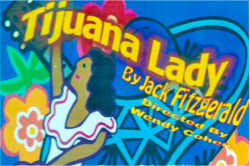 The opportunity to go to Hollywood was somewhat overwhelming because up until this point in my writing career, everything had been stage plays—with zero points in the screenplay department. So, there I was leaving the world of the stage, which is nothing but a mass of long shots, and going into the unknown universe of the screenplay, which includes close-ups and medium shots. Would I successfully be able to make the transition? I had no idea. I knew I would simply give it my best and hope all turned out okay.
The opportunity to go to Hollywood was somewhat overwhelming because up until this point in my writing career, everything had been stage plays—with zero points in the screenplay department. So, there I was leaving the world of the stage, which is nothing but a mass of long shots, and going into the unknown universe of the screenplay, which includes close-ups and medium shots. Would I successfully be able to make the transition? I had no idea. I knew I would simply give it my best and hope all turned out okay.
Before leaving Paris, I visited Smith’s English Book Store where I managed to lay my hands on several paperbacks covering screenwriting techniques. I kept them well out of view in case someone discovered that I was a complete novice when it came to this special world called “the scenario”.
I poured over those “how to” books and soon noticed that about the only thing I was really going to get from them was the nuts and bolts of the physicality of a screenplay: How the manuscript was formatted, how long a scene should be, how long the scenario itself should be, and how it too employed Act I, Act II and Act III techniques—even though they were not as obvious as in plays.
I realized that a lot of the information in those books went far too deeply into analyzing famous films and what had made them so successful. Those chapters were like trying to analyze a slot machine. Why did one pay off and another one didn’t?
After about two weeks of going through those books, I realized that plot, character and dialogue were the very basis of any screenplay and you had to get down all your information in about 120 pages max. Via my plays and having the opportunity of working with a live audience, I pretty much had acquired the essentials of writing dialogue and developing interesting characters.
In the next blog, you’ll start seeing just how Hollywood reacts to a foreign muse.
(If you’re reading this from Facebook then you should know I have a new website where you can read more about Roger. Click here to see the new website.)
December 22, 2016
Killing Time – The Muse Arrives
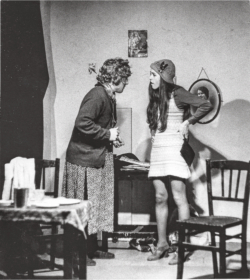 The theater people asked me if I had a play and I quickly said yes. I did have a one-act I had nurtured for years. I brought it out and we went into production. This time it was not avant-garde so the café-théâtre people were happy because they thought we might get larger audiences.
The theater people asked me if I had a play and I quickly said yes. I did have a one-act I had nurtured for years. I brought it out and we went into production. This time it was not avant-garde so the café-théâtre people were happy because they thought we might get larger audiences.
My play had two-characters. It was a turgid thing called Killing Time. I am of the opinion that most would-be authors are keen on writing turgid material. They believe, like I did at the time, that such is the direct avenue to hooking up with the muse.
The night before we were to open, the leading lady dropped out. She not only dropped out but she left town. Unthinkable, we thought, but it happened. We were desperate. Trying to find a replacement in one day was impossible. The husband of the young woman playing the other character said he had watched all the rehearsals and could do it in drag if it would save the show. I knew that we would be laughed out of the place if we tried presenting all my turgid thoughts via drag. So, I quickly re-wrote and re-directed it as a camp piece of ersatz high-drama. We opened, got a great review and instead of running for one week as originally planned, we ran for six weeks and made money. A producer of one of the nicest café-théâtres in Paris caught me after a performance one night and asked me if I had a play for him. He had had a cancellation and needed something to fill the spot. The problem was that the production had to open in two weeks. Instead of saying no, I said yes.
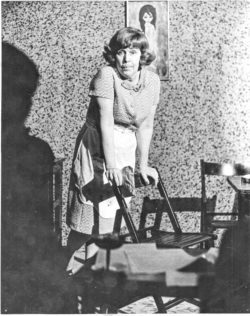
News From Freida
I merely went home and started writing another play, a comedy. I wrote it, cast it and rehearsed it all at the same time. We opened on time in two weeks and the play, News From Freida, became so popular that we had to have two different casts in two different venues. From that I went on to found the Paris English Theatre where 8 of my plays had their original productions. I eventually got offered a contract to go to Los Angeles to write a screenplay. My muse in Paris had treated me well. (A detailed accounting of my ten years in Paris and an anthology of the 8 plays of mine presented there are in an available volume entitled PARIS PLAYS.)
In the next bog, Paris meets Hollywood.
(If you’re reading this from Facebook then you should know I have a new website where you can read more about Roger. Click here to see the new website.)
December 15, 2016
The Muse Arrives Chez Fitzgerald
 A few months after I decided to remain in Paris, fate and my muse collided one eventful afternoon as I was walking from work to the Metro. I passed a small café-théâtre. I noticed a group of English-speaking people waiting in a line outside. My curiosity got the best of me and I wandered over and asked what was going on. A British young lady with clipboard in hand told me they were auditioning for a play in English to be performed at that very venue. She asked me if I wanted to read and being that I didn’t have another thing to do that afternoon, I said yes. I waited, finally read and, after being told to wait around, was informed that I had the part if I wanted it. I found out that the production was an avant-garde, three-character one act that was being put on by a Canadian lady who thought there might be money to be had presenting English theater in Paris. I accepted to play the role, not realizing that my life was going to drastically change after that one afternoon.
A few months after I decided to remain in Paris, fate and my muse collided one eventful afternoon as I was walking from work to the Metro. I passed a small café-théâtre. I noticed a group of English-speaking people waiting in a line outside. My curiosity got the best of me and I wandered over and asked what was going on. A British young lady with clipboard in hand told me they were auditioning for a play in English to be performed at that very venue. She asked me if I wanted to read and being that I didn’t have another thing to do that afternoon, I said yes. I waited, finally read and, after being told to wait around, was informed that I had the part if I wanted it. I found out that the production was an avant-garde, three-character one act that was being put on by a Canadian lady who thought there might be money to be had presenting English theater in Paris. I accepted to play the role, not realizing that my life was going to drastically change after that one afternoon.
We rehearsed the play and presented it for 5 performances. The drama critic from the International Herald Tribune newspaper attended and gave us a tepid review. We had a few people who attended but not enough to convince the Canadian lady that she should continue her endeavors to present English-language theater in Paris.
The young people who ran the café-théâtre were very disappointed as they had never sold so much wine and beer before. The Canadian impresario in the meantime had already split. They asked me if I wanted to put on a play at their café-théâtre. I of course said yes.
Saying “yes” is the first law to getting anywhere in the world of writing. Roger, as you will find out in future blogs, simply couldn’t utter that word yet became wildly successful. Hence, the title of my new book: ROGER SHOULD HAVE SAID YES.
(If you’re reading this from Facebook then you should know I have a new website where you can read more about Roger. Click here to see the new website.)

